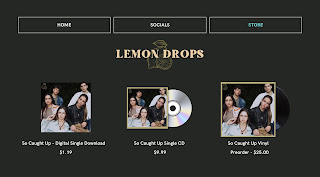In class, we met up with other students to discuss our processes and to share feedback and concerns. I explained to them that I'm at a point in my project where most of my planning is done and I now have to bring it to life in physical form, but one of my biggest concerns is what the my first scene should be. I shared the contents of my last blog post ("Going Back yet Moving Forward") with the group to have them read and understand the general storyline of my film. I got a lot of approval on my idea so far, and they all agreed that I should definitely start with one of the prop items that I feel is most important (starting the compilation of still shots of items around Alejandro's room). This made me think about how I should start with a picture of Alejandro with his parents in a happy time as one of the movie's main themes is the importance of family. One of my classmates also mentioned how it may be confusing to see glimpses of the character walking around in front of the object, but I stated my desire to allude to the fact that Alejandro is getting ready. This led them to suggest to cut to a scene of Alejandro buttoning up his shirt where I could also show him playing the first recording of the voicemail. I really like this idea because then the voicemail would be understood as a diegetic sound, which reinforces the fact that Alejandro is playing it to be able to feel closer to his mom on this important day.
Regarding the voicemail, I expressed my worry of using a background song on top of the voicemail and everyone agreed that it may sound too noisy. My reasoning for instrumental music was to make the voicemail sound less eerie as the film is also a coming-of-age movie, which typically contains an abundance of songs to create a youthful energy, but my classmates said that the quietness may actually help express the melancholic tone that my character is feeling in that moment. They also said that the voicemail sounds like it'll be enough noise to not make the watching of the scenes uncomfortable, but it all depends on what I think fits best in the editing process. An eerie and seemingly quiet sound to start a film reminded me of the drama Atonement which starts with the keys from a typewriter. The sound aids in an atmosphere of disturbing nature as well as suspense and tension, but I think if I try to obtain a voicemail recording that sounds upbeat, I won't fall into an eerie tone but an introspective one instead.
We also watched a TED Talk in class about filmmaker Andrew Stanton's guide to creating a great story. He explains how most people who are watching a movie are appealed by the fact that they have to uncover and discover aspects of the story. Stanton provides this wonderful quote that really stuck with me by William Archer, "Drama is anticipation mingled with uncertainty." He goes on to explain his personal 2 + 2 theory in writing stories which is to leave some questions for the viewers to answer. This not only makes the viewers continue to watch to discover the truth, but it also creates an interesting story with depth and meaning. This has made me rethink many features of the mise-en-scene elements apparent in my opening scenes, because I had thought to include a photograph of Alejandro with his mother in a time where she's sick (maybe expressed through a wheel chair or her on a bed), but now I want to leave it up to the viewers to assume what could have happened. I also don't want to show the graduation gown too early on in the scenes to have the audience wonder what Alejandro is dressing up for. The fun in movie watching is the piecing together of a puzzle, and my goal is to provide that within my project to create something that's interesting, entertaining, and meaningful.



















